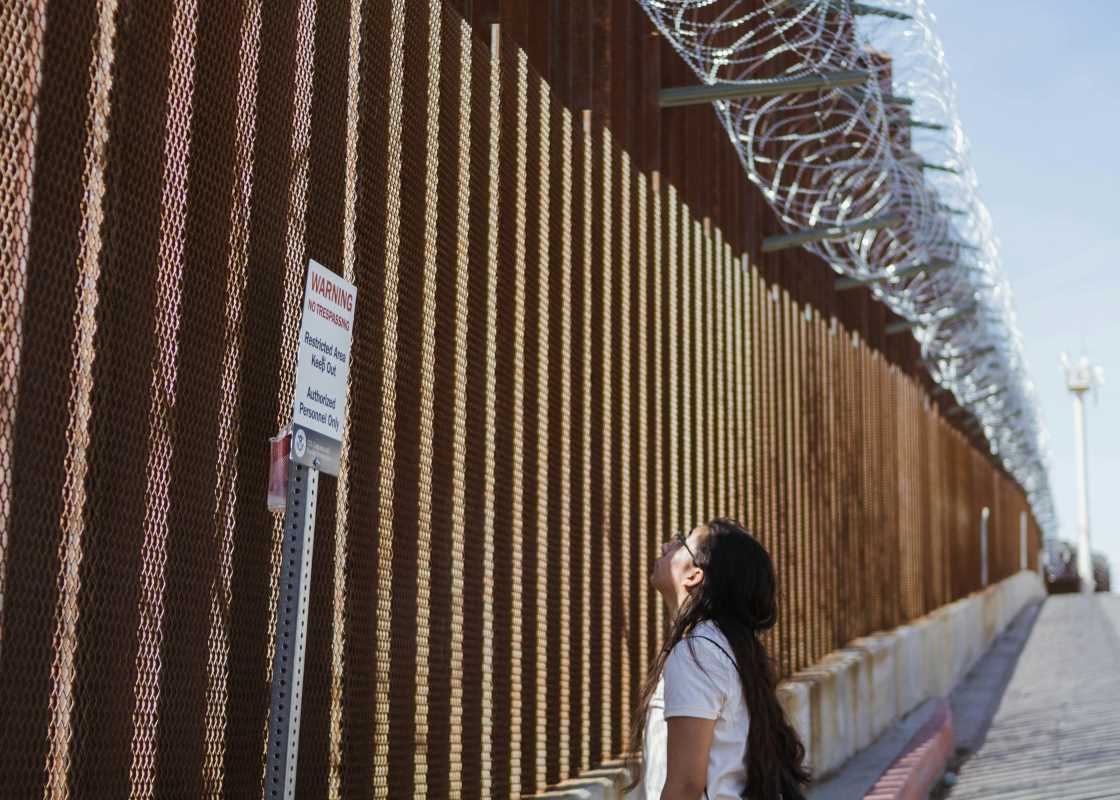When President Biden signed his latest executive order in October 2024, it sent ripples across the political and social fabric of the nation. Addressing the intricate web of border policies, the order promised a blend of humanity and pragmatism while inevitably sparking debates as sharp as the border itself.
Immigration activists and policymakers alike are pondering the short- and long-term impacts of these sweeping changes. But what does this executive order truly mean for immigration, border security, and the lives it touches on both sides?
Redefining Border Security
The executive order set out to redefine what border security means in an era of increasingly complex migration patterns. Instead of purely focusing on physical barriers or the number of boots on the ground, Biden’s policy emphasized technology and collaboration. Drones, sensors, and artificial intelligence are becoming the new face of reality at the border, modernizing systems that had long been stuck in analog limbo.
But before you imagine a fully AI-automated Wall-E guarding the border, it’s worth noting that the technology is only as effective as the policies guiding its use. The emphasis on data-driven border management aims to identify threats while minimizing disruption for legitimate asylum seekers and cross-border travelers. Critics, however, question how much monitoring pivots into overreach, with concerns about the potential misuse of surveillance systems.
The order also allocated funding for a greater presence of immigration specialists instead of solely focusing on enforcement agents. These caseworkers are intended to speed up the processing of asylum claims while ensuring individuals meet legal entry requirements. However, skeptics are quick to point out that while increasing personnel sounds great on paper, the bureaucratic machine might take longer to revamp than anticipated.
This approach directly counters the hardline security narratives that rely on dramatic measures like shutting down ports of entry. Biden’s order signals a shift from bold, wall-building rhetoric to problem-solving aimed at long-term management of migration pressures. Of course, whether this trend sticks in an election-charged environment is a different question altogether.
While the executive order paints a rosy picture of smart, balanced border management, its real test will lie in whether it can garner bipartisan support, an increasingly rare species in Washington these days.
The Impact on Immigration Procedures
Immigration is the heart beating at the center of any border policy, and this new executive order takes a stab at untangling one of the most tangled systems in U.S. governance. Reforms under the order aim to streamline visa applications and asylum procedures while reducing the maddening delays that have historically plagued such processes. If you've spent hours in an airport security line, imagine multiplying that wait time by months or even years, that’s essentially the state of immigration in the U.S. today.
Central to the reform is the commitment to increasing courtroom resources. New judges and court staff dedicated solely to immigration cases are being added to the system. By expediting case hearings, the administration seeks to address both legitimate asylum claims and fraudulent filings with fairness and speed. However, some critics believe this flood of new staff risks inconsistent outcomes due to a lack of experience or rushed training programs.
Seasonal worker programs have also received a facelift under this policy revision. The agriculture and construction industries especially welcomed streamlined pathways for temporary workers, relieving labor shortages while providing legal protections for workers often exploited under the table. But debates still rage as to whether these measures do enough to protect the broader U.S. labor market or if they encourage dependency on foreign labor.
Another innovation comes in the form of online portals, allowing potential migrants to track the status of their applications in real-time. By bringing transparency into a historically opaque bureaucracy, the administration hopes to rebuild trust among affected groups. While some cheer these digital tools, others caution against relying too heavily on technology, particularly when many applicants may lack easy online access.
At its core, the executive order attempts to marry compassion with efficiency, ensuring that migrating through legal channels is less like running a gauntlet and more like navigating a well-lit road.
Rebirth of Humanitarian Policies
Beyond logistics and technology, one of the executive order’s most visible components focuses on the humanitarian aspects of migration. With the global landscape shifting due to climate change, political upheaval, and economic disparities, the border has seen a surge in refugees fleeing unlivable conditions. Biden’s directive expands pathways for these individuals, signaling a move away from policies that treated asylum seekers as political footballs.
Humanitarian aid to border communities has been a prominent feature of this order. Increased funding for shelters, healthcare facilities, and crisis intervention improves conditions for migrants while easing the burden on local towns often strained by large inflows of people. Donors and NGOs welcomed the decision, seeing it as a step toward more empathetic management of migration waves.
Family reunifications are also at the forefront. Biden’s executive order called for a review of lingering separations caused by Trump-era “zero tolerance” policies. The administration aims to locate displaced children and reform deportation policies for parents of U.S.-born minors. For many, this is a long-overdue antidote to the trauma inflicted on thousands during prior years.
Yet, detractors argue that the expanded humanitarian framework may unintentionally encourage reckless journeys. Critics worry that vulnerable individuals may interpret these policies as an open-door promise, fueling hazardous treks across inhospitable terrains, often guided by profit-seeking smugglers. Proponents counter that safe legal avenues are, in fact, the best way to disrupt the human smuggling industry.
Whether this revamped humanitarian lens has the capacity to weather political opposition or further solidify divisions over immigration remains to be seen. For now, it sparks debate around the fine balance between compassion and deterrence.
Political Fallout and Public Perception
The executive order didn’t drop into a political vacuum; it landed right into a battlefield of ideological contrasts. While Democrats largely hailed it as a practical adjustment aligning with progressive values, Republicans were quick to brand it as a soft approach that could undermine national security. Immigration issues have always been a political litmus test, and this latest move has only amplified those divisions.
For Biden, the order offers both an opportunity and a gamble. On one hand, it shores up support among moderates frustrated with the chaos that has plagued border policies in years past. On the other, it hands opponents fresh ammunition to argue that the administration lacks the resolve to tighten immigration enforcement.
Meanwhile, the public remains split. Urban areas and border towns often have opposing perspectives depending on how deeply they’re impacted by migration policies. Polls demonstrate a national desire for reform, but consensus on how to implement it is as elusive as finding a working pen at the DMV.
Media coverage, unsurprisingly, mirrors these divides. Networks aligned with conservative agendas frame the order as a slippery slope, while liberal outlets champion it as a humane rejection of nativist policies. Somewhere in the middle lies the truth, a purple-tinted mix of progress and complexity.
The 2024 election season only adds more layers of intrigue. Presidential hopefuls from both parties are already dissecting this executive order, using it to distinguish their platforms. Whether it becomes a feather in Biden’s policy cap or another area of contention depends on how effectively the changes deliver measurable results.
Broader Implications and Challenges Ahead
Beyond the U.S.-Mexico border, Biden’s October executive order also carries implications for international relations. Improving collaboration with neighboring countries is a priority, as tackling root causes of migration often proves more impactful than band-aid border fixes. Expanded agreements with Central and South American nations aim to address economic instability, gang activity, and climate stresses fueling migration crises.
Global precedents may also emerge from Biden’s policies. Countries grappling with migration challenges are closely watching how the U.S. balances security with ethics in its evolving border blueprint. If Biden’s approach proves successful, you might see similar frameworks pop up in Europe, Asia, and elsewhere.
The order’s emphasis on climate migration also sets a crucial precedent. Rising global temperatures increasingly displace communities, and managing this influx will likely define border policies for decades to come. Solutions that take root now will shape future migrations dictated by environmental shifts.
Nonetheless, challenges ahead are far from trivial. Enforcement issues, funding shortages, and political pushback will shape whether or not these policies achieve their intended goals. Advocacy groups and policymakers realize the stakes could not be higher, given how intrinsic border policy has become to national conversations about identity, values, and fairness.
President Biden’s October 2024 executive order makes a bold attempt to modernize one of the most contentious aspects of American governance. Whether it turns out to be a landmark achievement or a lightning rod for dissent remains part of an unfolding story. Either way, the lessons it offers will cascade far beyond the borders it tries to manage.







